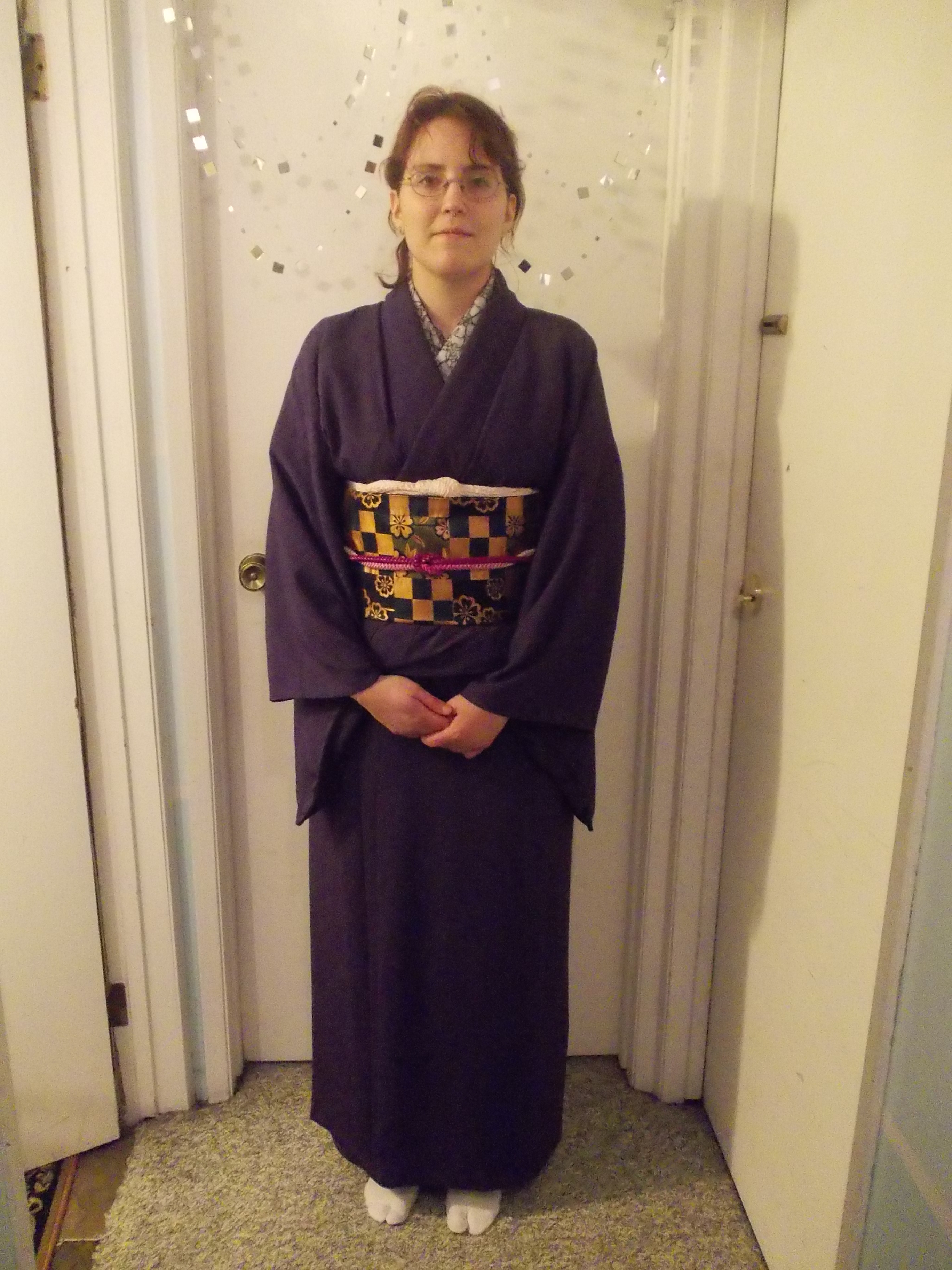I was searching for a fireworks pattern, but this was the closest I could get to that I actually liked. I plan to wear this with a black obi in hopes that it will make the colours on the cotton "pop out" like fireworks (still don't have a black one yet!).
I'm sorry, the tape measure is a bit hard to read in the photo. It reads 53 cm wide (fabric folded in half.)
And now for the sewing instructions:
1. Cut out all the pieces for the yukata. Pay extra attention to making sure the pieces are cut straight and at right angels if using a Western width fabric.
2. Sew the back seam. This seam is usually done using a princess seam (aka French seam).
First, place the two body panels wrong sides together (right/patterned side out). Then fold in half . The top of the fold is the shoulder line. Pin one side from hem to shoulder. Sew with a 1 centimeter seam allowance.
Next, unfold the fabric and spread the panels on an ironing board. First iron down the seam to one side. Then fold the panels, right side in, and iron the seam again.
Pin, and sew a 1.5 centimeter seam allowance. Iron seam flat.
3. Cut the neck line. At the shoulder line, cut a 9.5 cm line from both sides of the center seam (making 19 cm in total)
(Photo showing cut neck line and back seam on wrong side of fabric)
If you have ever looked at the back horizontal seam closely, you would notice that it's a false seam. There is no actual cut there.

This tuck is sew down far enough on the back so it can be hidden behind the obi when tied.
The tuck helps great the gap without having to cut extra fabric out of the panels. In the past, re-purposing fabric was very important in Japan, thus minimal cuts were made. Now-a-days, I doubt yukata would ever go through any type of repurposing. If you wanted to, you can simply measure down the back where the incision should be and cut it without creating the false tuck, and it wouldn't look any different when worn.
But to make this seam anyways, layout the panels shown below and make a fold 43 centimeters from the collar line.
(Ironed back seams)
Then, fold the body panels in half long wise and iron the shoulders to make a new should line.
(New shoulder seam with lowered neck line)
-------------------------------------
Next will be attaching okumi panels. Stay tuned for part six.




















